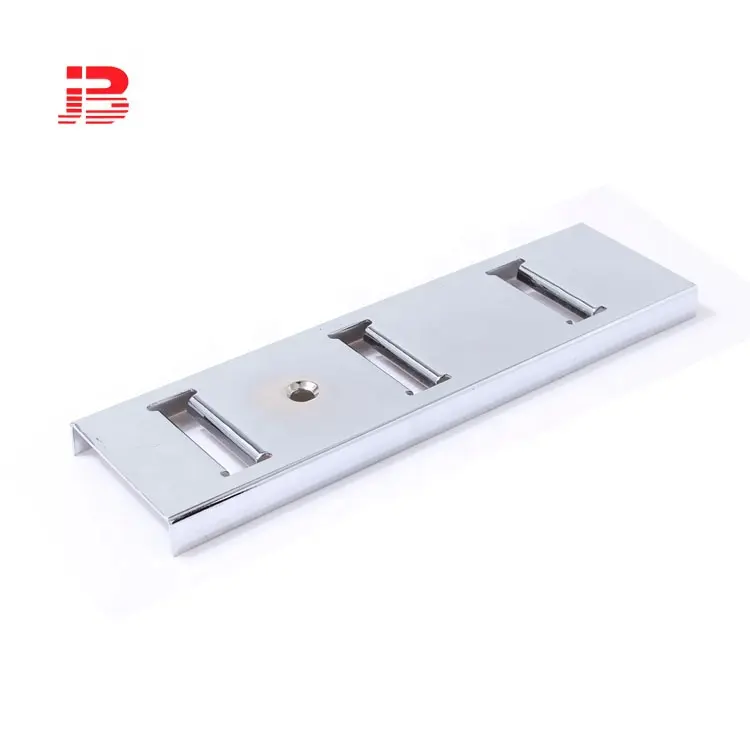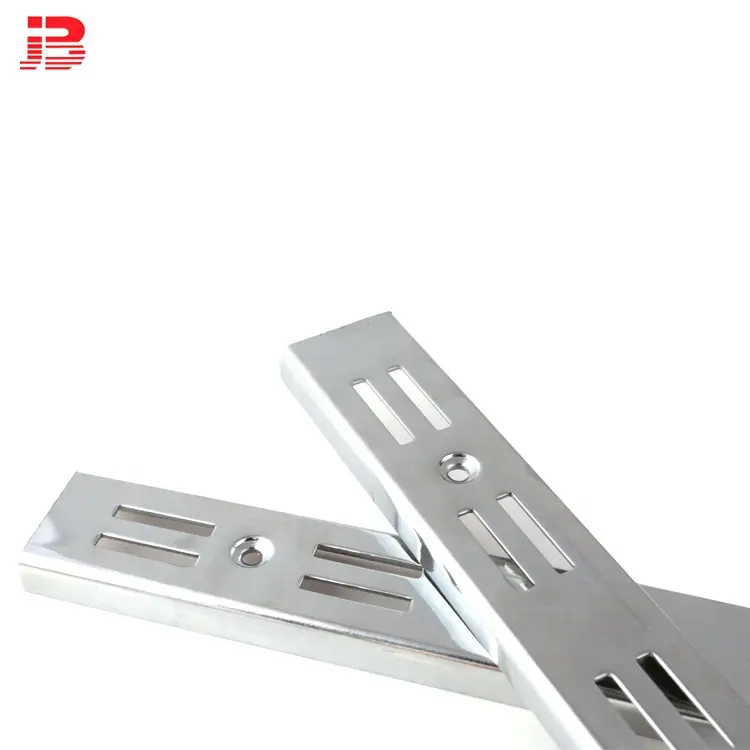The Structural Revolution of Tube Columns in Contemporary Architecture
Tube columns have emerged as a fundamental component in modern building design, offering unparalleled strength-to-weight ratios and design flexibility that traditional solid columns cannot match. These hollow structural elements have transformed how architects and engineers approach vertical support systems in everything from skyscrapers to residential projects. The inherent efficiency of tube columns allows for more creative freedom in architectural expression while maintaining structural integrity and safety standards. As urban environments become denser and architectural ambitions grow taller, tube columns provide the perfect solution for supporting innovative designs without compromising on space or aesthetics. Their adaptability across various materials - including steel, concrete, and composite options - makes them suitable for diverse architectural styles and functional requirements. The evolution of tube column technology continues to push the boundaries of what's possible in building design and construction methodologies.
Unmatched Structural Performance
Superior Load-Bearing Capacity
Tube columns demonstrate exceptional strength characteristics that make them ideal for supporting heavy loads in modern structures. The circular or rectangular hollow shape of tube columns provides optimal distribution of compressive forces along their entire cross-section. This geometric efficiency allows tube columns to support significant weight while using less material than equivalent solid columns. The closed-section design of tube columns offers enhanced resistance to torsional forces and bending moments common in high-rise buildings. Structural engineers value how tube columns maintain their integrity under various load conditions, including seismic activity and high wind pressures. The uniform stress distribution throughout tube columns prevents localized weak points that could compromise structural stability. Advanced computer modeling has further optimized tube column designs to handle specific load requirements with remarkable precision.
Enhanced Resistance to Buckling
The inherent design of tube columns provides superior resistance to buckling compared to traditional solid columns of similar dimensions. The hollow geometry creates a more favorable radius of gyration, significantly improving the column's slenderness ratio and overall stability. Tube columns can withstand greater compressive loads before experiencing elastic instability, making them particularly valuable in tall building applications. The continuous perimeter of tube columns offers uniform support that prevents localized deformation under heavy loads. Structural designers can customize tube column wall thickness to precisely match anticipated loading conditions without unnecessary material usage. The buckling resistance of tube columns allows for more slender structural elements that maximize usable interior space. Modern fabrication techniques enable the production of tube columns with precisely engineered cross-sections that optimize their resistance to various buckling modes.

Architectural Flexibility and Aesthetic Advantages
Design Versatility Across Styles
Tube columns offer architects unprecedented creative freedom to realize both contemporary and traditional design visions. The clean lines and minimalist profile of tube columns complement modern architectural aesthetics without visual bulk. Designers can specify tube columns in various shapes - including circular, square, rectangular, and even custom profiles - to match specific design languages. The hollow nature of tube columns allows for discreet integration of building services like electrical conduits and plumbing within the structural elements. Architectural firms appreciate how tube columns can be left exposed as design features or easily concealed within walls for more traditional appearances. The material options for tube columns - from polished steel to painted finishes - provide additional aesthetic customization opportunities. This versatility makes tube columns equally suitable for cutting-edge commercial towers and sensitive heritage restoration projects.
Space Optimization and Layout Freedom
The efficient design of tube columns creates more usable interior space compared to bulkier solid alternatives. The slender profiles possible with tube columns allow for more open floor plans with fewer visual obstructions. Building owners benefit from the increased lettable space made possible by tube columns' space-saving characteristics. The predictable placement of tube columns simplifies interior layout planning for both structural and non-structural partitions. Architects can design around tube columns with confidence, knowing their consistent performance won't require unexpected space compromises. The reduced footprint of tube columns proves particularly valuable in urban environments where every square foot carries significant value. Modern construction techniques allow tube columns to support longer spans between supports, further enhancing spatial flexibility in building designs.
Construction Efficiency and Sustainability Benefits
Faster Installation Processes
Tube columns streamline construction timelines through their prefabricated nature and simplified installation procedures. The standardized production of tube columns ensures consistent quality and dimensional accuracy that accelerates on-site assembly. Construction crews can quickly erect tube column frameworks, reducing labor costs and project schedules compared to cast-in-place alternatives. The lightweight nature of many tube column systems (relative to their load capacity) simplifies handling and positioning during construction. Tube columns often arrive on-site pre-finished, eliminating time-consuming post-installation treatments. The modular design of tube column systems allows for parallel construction activities to proceed without interference. These time-saving advantages make tube columns particularly valuable for projects with tight deadlines or in fast-growing urban markets.
Material Efficiency and Environmental Impact
The hollow design of tube columns represents a triumph of material efficiency in structural engineering. Tube columns achieve equivalent or superior performance to solid columns while using significantly less raw material. This material reduction translates to lower embodied energy in the construction process and reduced transportation impacts. Many tube column systems incorporate high percentages of recycled content, particularly in steel versions, further enhancing their sustainability profile. The longevity and durability of tube columns minimize the need for replacements or repairs over a building's lifecycle. At end-of-life, tube columns can typically be fully recycled, contributing to circular economy principles in construction. The reduced weight of tube column structures can also lead to smaller foundation requirements, saving additional materials in below-grade construction. These environmental benefits make tube columns an increasingly preferred choice for green building projects and sustainable design initiatives.
Technical Innovations in Tube Column Systems
Advanced Composite Materials
Modern tube columns increasingly incorporate composite materials that combine the benefits of multiple substance properties. Fiber-reinforced polymer tube columns offer exceptional strength with corrosion resistance ideal for harsh environments. Hybrid tube columns might combine steel outer shells with concrete cores for optimized performance characteristics. Researchers are developing next-generation tube columns with embedded sensors to monitor structural health in real-time. The use of high-performance concrete in tube column systems allows for slimmer profiles with enhanced fire resistance. Some innovative tube column designs incorporate phase-change materials for improved thermal performance in building envelopes. These material advancements continue to expand the applications and capabilities of tube column technology in architectural design.
Seismic and Wind Resistance Engineering
Tube columns play a critical role in modern structural systems designed to withstand extreme environmental forces. The inherent ductility of properly engineered tube columns makes them ideal for seismic zones where buildings must flex without failing. Structural engineers can design tube columns with specific energy-dissipating characteristics to absorb earthquake forces. In hurricane-prone regions, tube columns provide the necessary rigidity to resist wind loads while maintaining architectural flexibility. Advanced connection systems between tube columns and other structural elements enhance overall building stability during dynamic events. Computer-controlled fabrication ensures precise tolerances in tube column production that contribute to predictable performance under stress. These engineered solutions make tube columns indispensable for resilient construction in challenging environments.
FAQ
What are the most common materials used for tube columns?
The most prevalent materials for tube columns include structural steel, stainless steel, concrete-filled steel tubes, and fiber-reinforced polymers. Each material offers distinct advantages - steel provides high strength-to-weight ratios, concrete-filled options add fire resistance, and composites deliver corrosion resistance. The choice depends on structural requirements, environmental conditions, and architectural preferences.
How do tube columns compare to traditional solid columns in cost?
While tube columns may have higher initial material costs per unit, they often prove more economical overall due to reduced material quantities, faster installation, and space savings. The total cost advantage becomes particularly significant in high-rise construction where tube columns reduce structural weight and foundation requirements. Lifecycle cost analyses typically favor tube columns due to their durability and low maintenance needs.
Can tube columns be used in residential construction?
Absolutely. Tube columns are increasingly popular in high-end residential projects where open floor plans and modern aesthetics are desired. Smaller diameter tube columns work well in houses, providing structural support without visual bulk. The same advantages of strength, space efficiency, and design flexibility that benefit commercial projects apply to residential applications.
What maintenance do tube columns require?
Maintenance requirements vary by material but are generally minimal. Steel tube columns may need periodic inspection for corrosion and protective coating maintenance. Concrete-filled or composite tube columns often require virtually no maintenance beyond routine structural inspections. Properly specified and installed tube columns should last the lifetime of the building with minimal intervention.













































